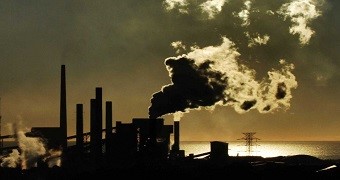United Nations’ IPCC recently warned that global gas emissions must reach zero by 2050 to stop global warming at 1.5 degrees. The authors warned that if warming was allowed to reach 2C, the world would risk hitting “tipping points”, setting a course towards uncontrollable temperatures.

They said the use of coal for electricity generation would have to drop to between 0 and 2 per cent of current usage. That prediction is making even the Paris targets (which many countries refuse to adopt) look too conservative.
In Australia, the Environment Minister suggests the 91 scientists behind the report got it wrong and the government are doing enough. The Federal Government maintains it will meet its commitment to the Paris climate agreement and is instead defending coal and lower electricity prices.
An adverse report was sat on for nearly two months by the Federal Government. “This has become a worryingly familiar scenario,” Climate Council acting chief Dr Martin Rice said. “The Federal Government not only delays releasing climate information, it also tries to bury it. We’ve seen emissions data quietly released on Christmas Eve, or on a Friday evening, at a time it’s least likely to attract attention or scrutiny.”
The Department of Environment’s quarterly Update of Australia’s National Greenhouse Gas Inventory — showed, after adjustment for seasonal variation, in the three months of this year Australia had the highest levels of carbon pollution since 2011. It also showed an upward trend in annual emissions since 2013. Even after excluding data about emissions from tree clearing and regrowth. Australia’s emissions reached an all-time high.
After the report was uploaded Ms Price sent out a media release “Australia on track to meet emissions targets” and headlined “emissions intensity at lowest levels for 28 years”, “…over the last 12 months there’s been a slight increase, but the most important thing in that report is that electricity emissions have declined by 13.9 per cent in the year to March 2018,”
The release did not mention emissions had gone up, but instead focused on comparing the current figures to those from 2005 and 2000 — years when emissions were higher than they are now. It also focused on emissions per head of population, which have declined. Ms Price said. “We know that emissions per capita were at their lowest level in 28 years, and emissions per capita in the year to March 2018 have fallen 36 per cent since 1990.”The slight increase in emissions was largely driven by the LNG production for export, which the volumes increased by some 25.4 per cent.
Australia only produces 2% of the problem, but smaller countries make up the 60% of emissions. Yes, the big gains are in the USA and China, but carbon pollution has to fall everywhere.
The Government’s official projections, last updated in December 2017, show under ‘business as usual’ models, emissions will increase steadily all the way to 2030. For the Climate Council it was a different conclusion, “Emissions are rising and there’s no national plan to turn it around,” Ms O’Shanassy said. “It doesn’t take a rocket scientist to know that if we don’t have a plan, we’re not going to meet our emission target.”
